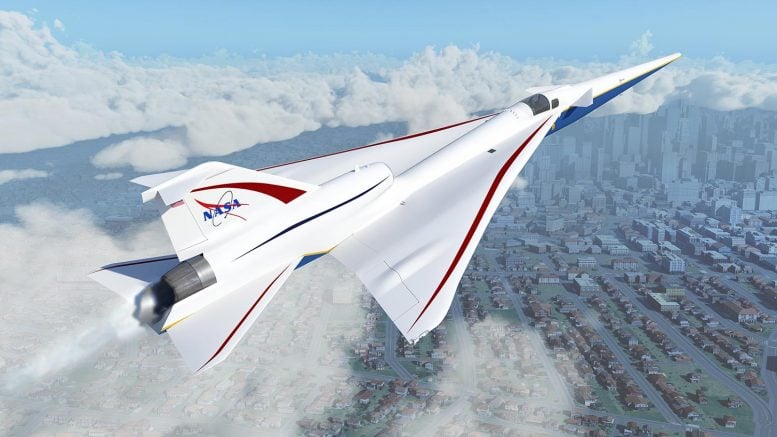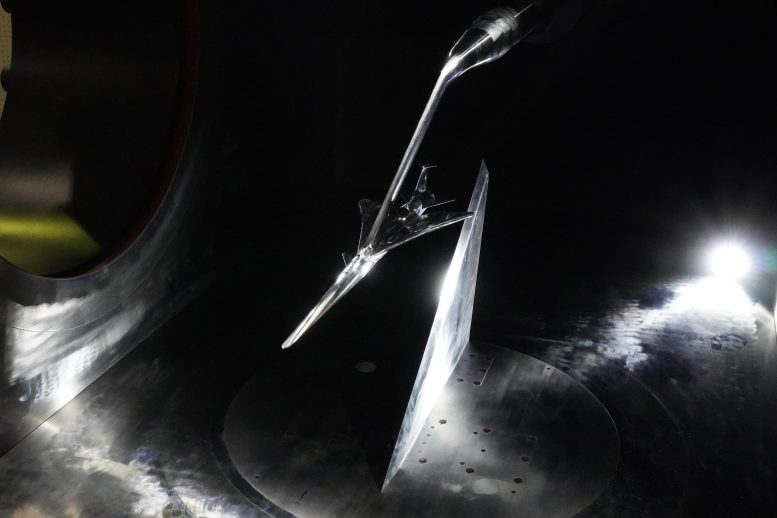
NASA and JAXA fired a hand-sized X-59 model through a Mach 1.4 wind tunnel, gathering proof that its needle-nose and tailored wings can scatter shock waves into a muted “thump.”
The data validate computer predictions, setting the stage for the full-scale jet’s first flight and Quesst’s mission to rewrite the rules of supersonic travel without rattling communities below.
Supersonic Noise Test Milestone
NASA and the Japanese Aerospace Exploration Agency (JAXA) recently placed a scaled-down version of the X-59 experimental jet inside a supersonic wind tunnel in Chofu, Japan to measure how much noise might reach listeners on the ground.
The experiment marked a key step for NASA’s one-of-a-kind X-59, which aims to break the sound barrier without producing the ear-shattering sonic boom typical of supersonic flight.
Because the sound that reaches the ground is tied to the plane’s pressure signature, understanding that acoustic footprint is essential.

Scaled Model Wind-Tunnel Insights
The full-size X-59 stretches 99.7 feet long with a wingspan of 29.7 feet, yet JAXA’s tunnel measures just over 3 feet on each side.
To fit the tunnel, engineers built a model only 1.62 percent of the aircraft’s actual size—about 19 inches nose to tail—and exposed it to airflow matching the jet’s planned cruising speed of Mach 1.4 (approximately 925 miles per hour).
Data from these trials allows NASA researchers to compare real-world results with their Computational Fluid Dynamics predictions, which map how air will flow around the aircraft.
Understanding Shock-Wave Quieting
This marked the third round of wind tunnel tests for the X-59 model, following a previous test at JAXA and at NASA’s Glenn Research Center in Ohio.
The data will help researchers understand the noise level that will be created by the shock waves the X-59 produces at supersonic speeds.
The shock waves from traditional supersonic aircraft typically merge together, producing a loud sonic boom. The X-59’s unique design works to keep shock waves from merging, which will result in a quieter sonic thump.
Toward Quiet Supersonic Travel
The X-59 was built in Palmdale, California at contractor Lockheed Martin Skunk Works and is undergoing final ground tests en route to its historic first flight this year.
NASA’s Quesst mission aims to help change the future of quiet supersonic travel using the X-59. The experimental aircraft allows the Quesst team to gather public feedback on acceptable sound levels for quiet supersonic flight.
Through Quesst’s development of the X-59, NASA will deliver design tools and technology for quiet supersonic airliners that will achieve the high speeds desired by commercial operators without creating disturbance to people on the ground.
Never miss a breakthrough: Join the SciTechDaily newsletter.
1 Comment
What if they tweaked the jet exhaust of this, installed high-density aero-baffles, that makes it shoot out like a tapering corkscrew, in a MUCH LONGER, action/reaction straight line? Could that further reduce the sonic boom noise, and also improve the jet fuel mileage?